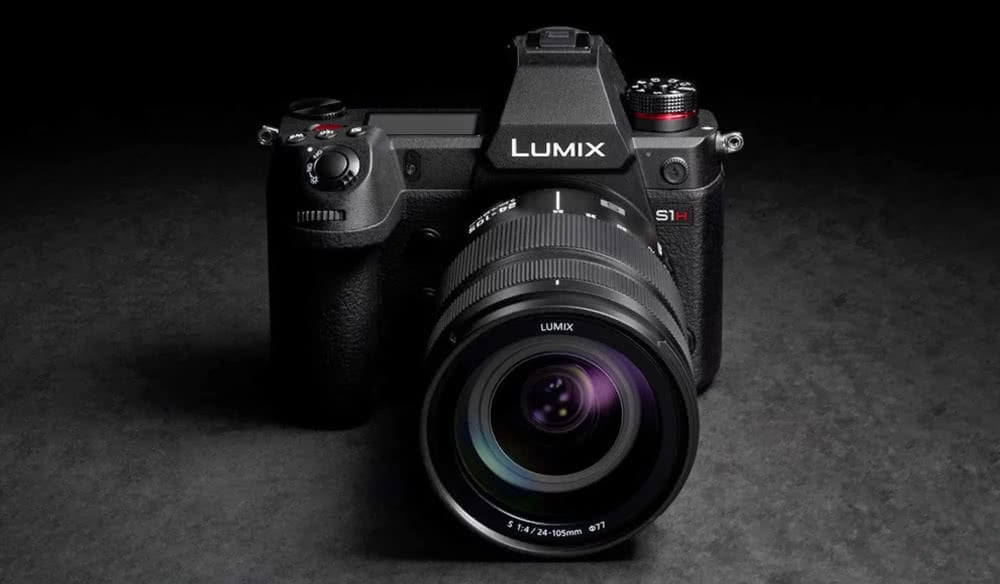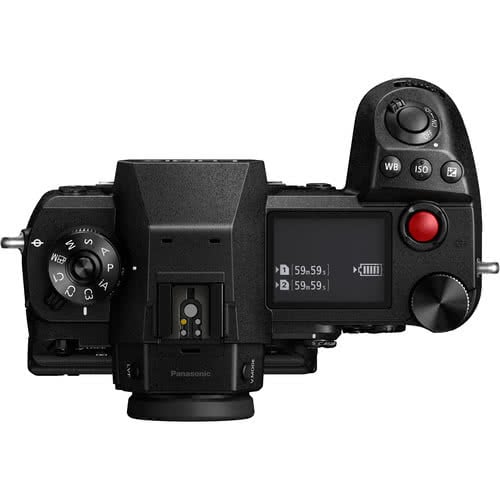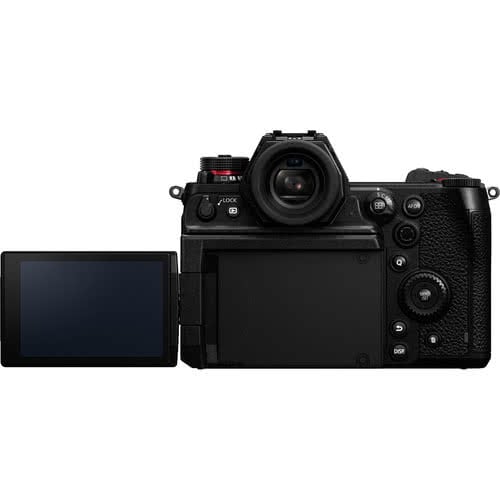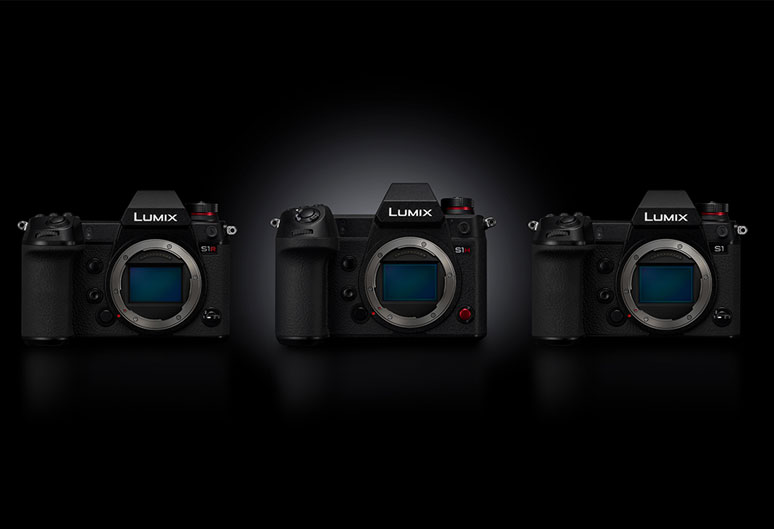Panasonic Lumix S1H versus S1 and S1R: What are the key differences?
Panasonic recently rocked the mirrorless world with the full announcement of its third full-frame mirrorless camera – the Lumix S1H. While it rounds out a trifecta that includes the Lumix S1 and Lumix S1R, this new model is quite a different beast.
If you’re thinking about hopping over to the full-frame S1 system and aren’t sure where this new model fits in, don’t worry – we’ve got you covered. In this blog we’ll take you through the main differences between the new Lumix S1H and the previous S1 and S1R cameras – as well as their similarities – so you can figure out which is the right buy for you.
In essential terms, the three cameras fulfil roughly three roles – the new S1H is a video specialist, the S1R is a high-resolution megapixel monster geared more towards stills, and the S1 sits somewhere in between.
But, of course, there’s much more detail than this to get into. So, let’s get started!

Key difference: The S1H masters video
The real key to understanding where the S1H sits in this lineup is video. While the Lumix S1 and S1R are stills/video hybrids, the S1H is very much a video-focused camera. For a comparison point, it occupies a similar sort of space the Sony a7s does compared to the a7 and a7R, though this is arguably even more of an extreme specialisation.
The Lumix S1H the first full-frame mirrorless camera to be equipped to shoot full-frame, uncropped 6K video (5,888 x 3,312) at 24 fps, as well as 4K at 60fps using a Super 35 sensor size.
Recording 6K “uncropped” means that it uses the entire width of its sensor, creating footage with a 3:2 aspect ratio. It also shoots 5.4K at up to 30p in 3:2 aspect ratio, 5.9K at up to 30p in a 16:9 ratio and Cinema 4K at up to 30p, or 60p with an APS-C crop.
The S1H can also record 10-bit internally in 4K and Cinema 4K up to 30p, bumping up to 60p with the HEVC codec. It records 6K, 5.9K and 5.4K in HEVC 10-bit 4:2:0. It also offers HFR (high frame rate) mode for slow-motion, which works in 10-bit with audio, unlike the VFR (variable frame rate) mode on the S1.
There’s also more coming for the S1H – Atomos, maker of popular recorders such as the Ninja Inferno, has promised that a RAW video update will be coming to the S1H, allowing it to put out 4K 60p in RAW format.
On this subject, it’s worth noting that a (paid) firmware update is available for the S1, which will give it some of the S1H’s functionality, such as 10-bit 4:2:2 internal recording and the V-Log flat gamma profile.

Key difference: ISO sensitivity
There’s an interesting key difference between the cameras here. At first glance, it seems like the S1 and S1H offer pretty much the same deal – both these cameras provide ISO ranges of 100 to 51,200, expandable to 50 and 204,800 (the high-resolution S1R is a slightly different prospect).
However, the crucial difference is that the Lumix S1H has inherited Dual Native ISO from Panasonic’s Vari-Cam line of professional camcorders. What this means is that the user can switch between native ISO settings of 640 and 4000 without incurring any increase of image noise, which can be massively beneficial for video shooters.
Key difference: Ergonomics and heat dissipation
All the extra functionality of the S1H comes at a cost – and not just a financial one! (Although, yes, also a financial one.) The camera is noticeably bulkier and heavier than either of its S1 siblings – weighing 1,164g, while the S1 and S1r both weigh about 1,020g.
This extra weight is in part due to a cooling system incorporated into the S1H – when you boot it up you’ll notice the fan working. This, however, is what allows it to offer unlimited video recording time no matter what resolution or setting you’re using, while the S1 and S1R have strict time caps if you’re recording in anything other than 4K 30p.
Another ergonomic difference is the S1H’s rear LCD screen, which it borrows (like several of its features) from the fantastic Lumix GH5S. It’s a fully articulating model which can be opened out to the side and rotated 180 degrees.
Finally, there’s also a difference worth noting in terms of card slots. While the S1 and S1R have dual card slots, one for an XQD card and one for a UHS-II SD card, the S1H just has dual slots that both accept UHS-II cards, which aren’t as fast as XQD
Key similarities
There are plenty of similarities between these cameras too. The S1H and S1 both sport a full-frame sensor with 24.2MP of resolution, though in the case of the S1H it also includes an optical low-pass filter, which sacrifices some resolving power in favour of reducing unwanted artifacts such as moiré – makes complete sense for a video-focused camera! (The S1R is a different beast, with a 47.1MP CMOS sensor).
The cameras all use Panasonic’s Depth from Defocus autofocus system which provides 225 autofocus points, and all can shoot at up to 9 fps, or 6 with continuous focusing. All the cameras also benefit from Panasonic’s 5-axis stabilisation system that provides exposure compensation of up to 6.5EV. All cameras also sport an electronic viewfinder with 5.76-million dots of resolution.

Conclusion
The Panasonic Lumix S1H does a great job of completing the trilogy, and once you understand the different roles that these cameras fulfil, it really shouldn’t be too difficult to pick which one is right for you. If you’re focused on video almost exclusively, the S1H is easily the pick – while it’s significantly more expensive, it’s much more sophisticated in every department.
If you’re shooting stills then the S1 and S1R are the best cameras to pick – while the S1H does have stills capabilities, it would make no sense to buy it for this purpose when the S1 can do everything basically the same for much cheaper. If you’re going to be shooting stills exclusively then the S1R makes more sense, while a hybrid shooter will want to plump for the S1.
Thanks for reading – and we hope we helped you understand these camera a little better!


The S1 had a great firmware update which in turn makes it a S1H! Save your money!!
Nice Panasonic camera’s…..I wonder: if IBIS is available in all 3 FF camera’s, Panasonic could perhaps also make a GH5S with IBIS right? I think the S1R for stills and the GH5S with IBIS would be a perfect combination (when mounting it on a gimbal, since the S1H is too expensive AND way too heavy to carry around next to the S1R).